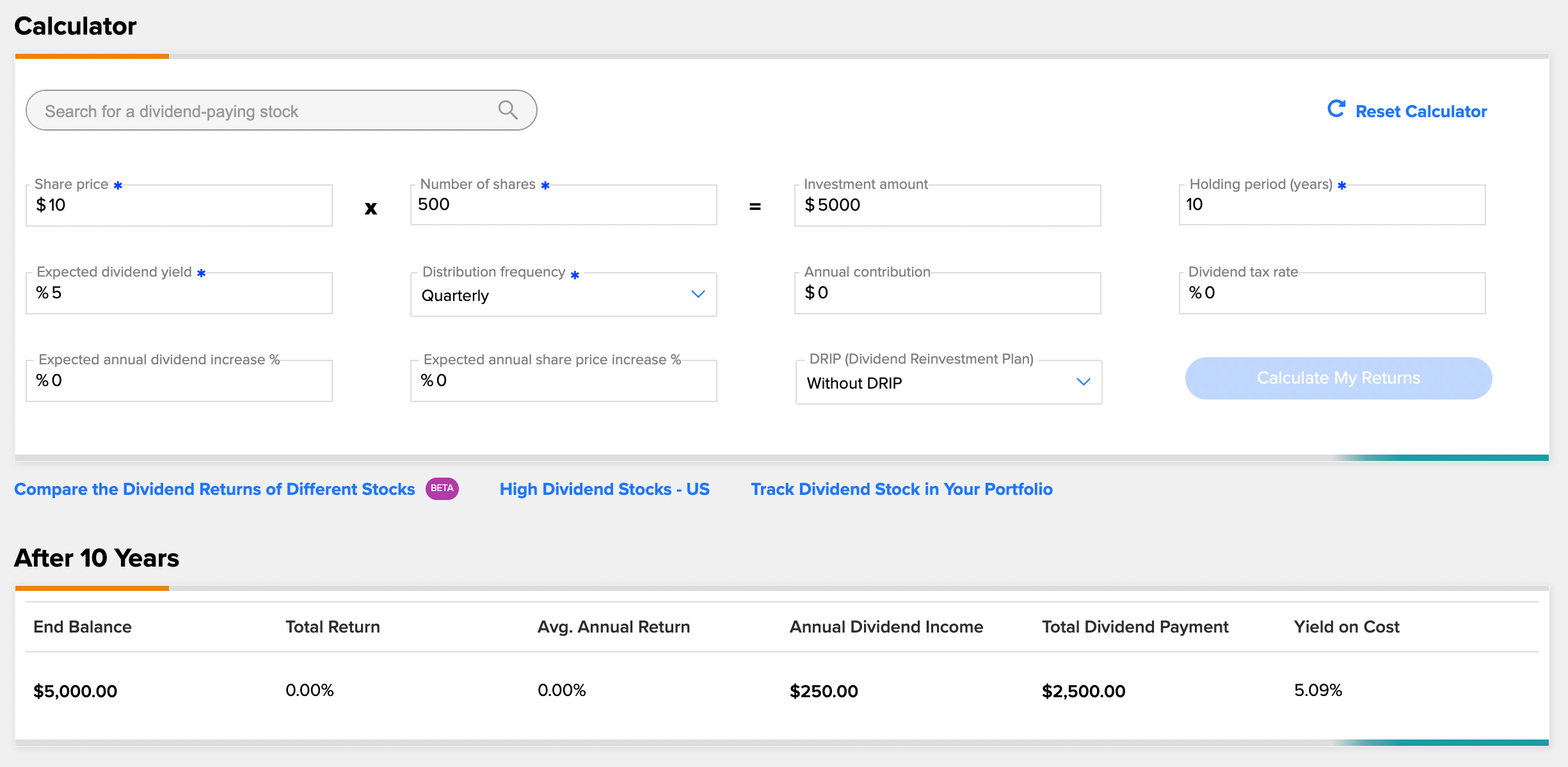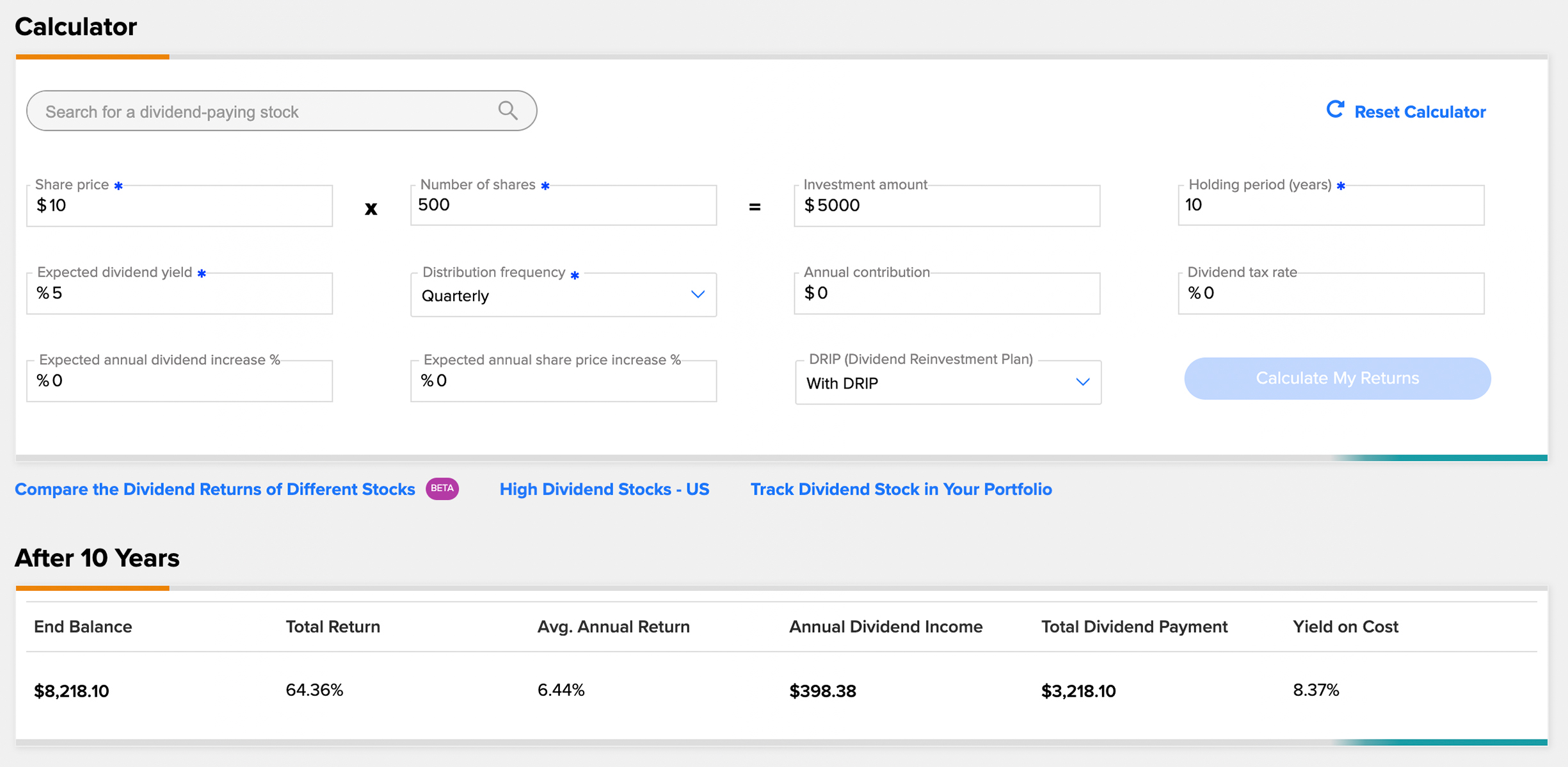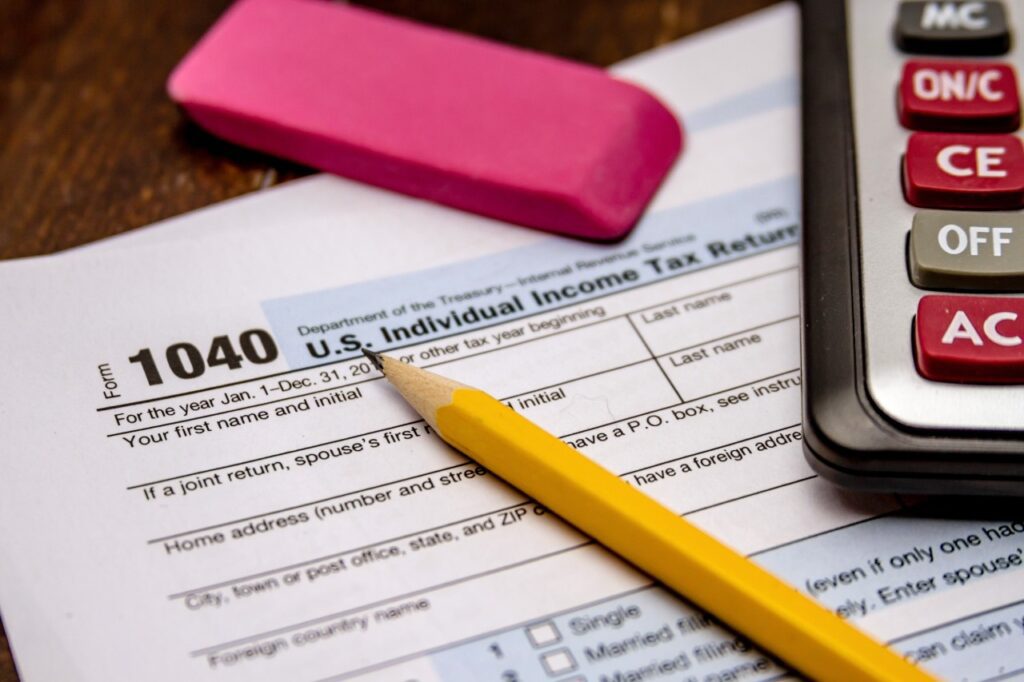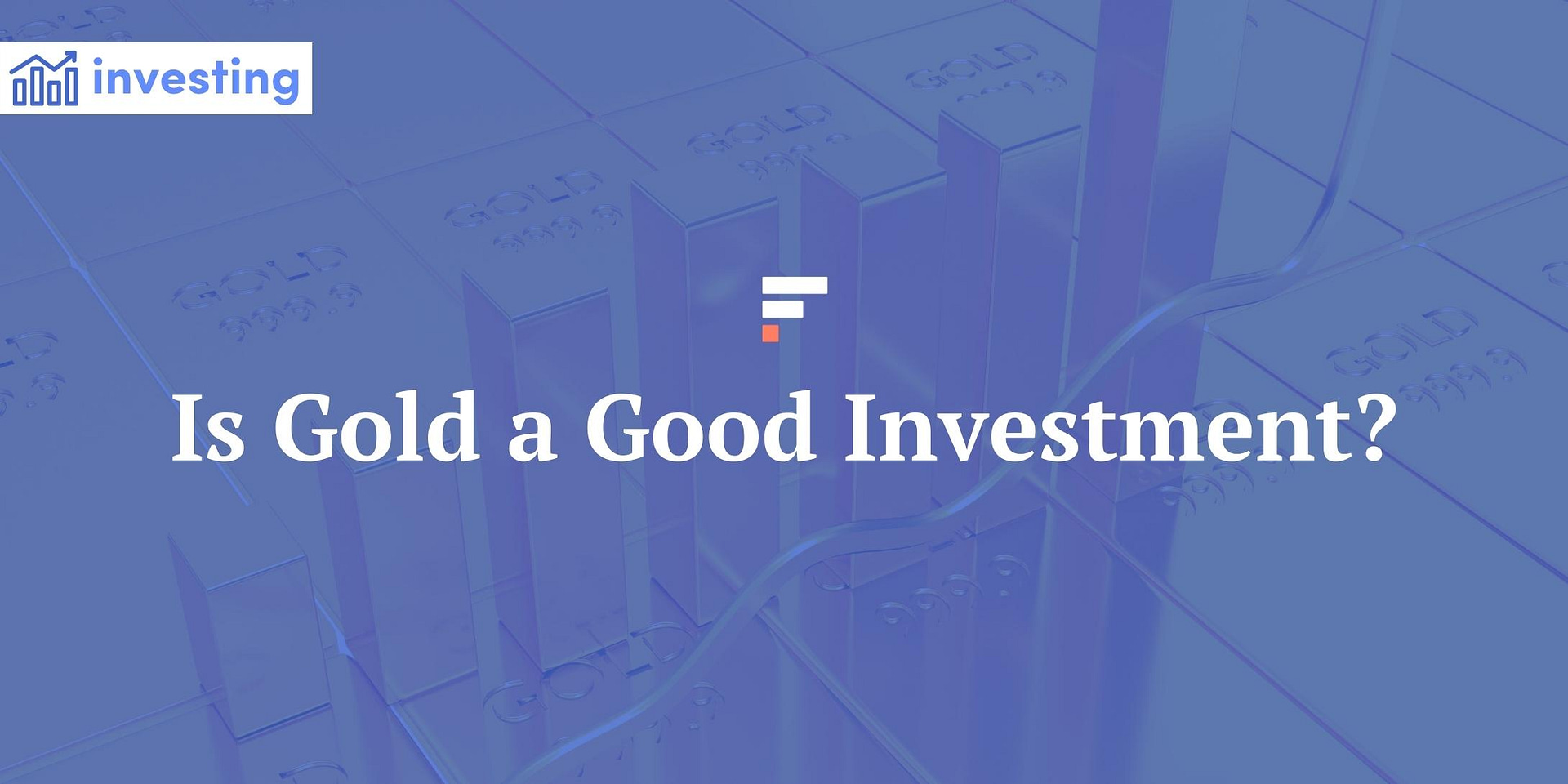When it comes to generating passive income, dividend stock investing is a great method. Not only is it easy to set up, but the returns can also be reasonably fast, which can make it ideal for beginners or anyone wishing to boost their passive income quickly.
Seasoned investors also flock to dividend-paying stocks, as well. They know that not only can their investment return dividends, but it can also grow in value via stock price appreciation.
So, if you want to learn more about investing in dividend stocks to grow your passive income portfolio, read on. This article explains all of the crucial things you need to look out for, including how to evaluate a stock and the powerful compounding effect of reinvesting dividends that can turbo-charge your investments.
What Are Dividend Stocks?
Dividend stocks are simply stocks of companies that make regular payouts to shareholders, usually in the form of cash but sometimes in the form of more shares. Or a mix of both.
The dividend itself is paid out from a portion of a company’s profits. Payments can be made at any time, but generally, a company will choose to pay dividends quarterly, monthly, or annually.
Why Do Companies Pay Dividends?
The reasons companies make dividend payments to shareholders (rather than keep it all for themselves!) are several.
- The initial influx of cash from investors can help accelerate the growth of a business.
- Paying regular and stable dividends attracts investors, which drives the stock price up, as well as the value of the business.
- Companies that pay out good dividends to investors tend to get good media coverage in the financial press, further bolstering a company’s reputation as a good investment option.
So, dividends are good for both the business itself and, obviously, for us investors. But before you rush off and buy the juiciest-looking stock you can afford, there are a few things you need to be aware of…
What to Look For When Assessing Dividend Stocks
Before we look at the common things to assess before buying dividend stocks, a quick note on two different types of dividends.
Preferred Dividends
Preferred dividends are paid out before common dividends, and are often of a higher value. They are a mix between common stock and a bond, but, unlike common stock, they don’t come with shareholder voting rights. Because preferred dividends are paid before common dividends, there is slightly less risk than with common stock, but they are not as safe as a bond. (Bonds are loans that have to be paid back by the company, whereas a dividend, preferred or common, is never guaranteed). Not all companies have preferred stocks. And they can also take longer to sell.
Common Dividends
These are the dividends paid to common stock owners (i.e., not preferred). These are paid after any preferred dividends and are usually less.
You’ll see those terms referenced below. Now let’s move on to the list of metrics that you need to understand before building your dividend investing portfolio.
Dividend Yield
A company’s dividend yield is the annual dividend amount per share divided by the share price and is shown as a percentage.
For example, if you owned a stock that cost $10 per share and the company paid an annual dividend of $0.50 per share, the dividend yield would be 5%. ($0.50 ÷ $10.00 x 100 = 5%)
A word of warning. Many beginner investors assume that high dividend yields mean higher returns. This isn’t always the case. A high dividend yield may result in a company not being able to maintain that yield should it hit difficulties.
Whereas a lower dividend yield allows a company to retain more of its earnings as a cash buffer, meaning that even in difficult periods, it can continue to maintain, or even grow its dividends.
A good and sustainable dividend yield is between 2% and 4%.
Dividend Payout Ratios
The Dividend Payout Ratio is the proportion of a company’s net income that is paid out in dividends to shareholders. It’s usually displayed as a percentage.
It’s worked out by dividing the dividend payout in the period by the net income for the same period.
So, let’s say a company pays $10 million in dividends in the current period, and its net income is $50 million. This would mean the dividend payout ratio would be 20%. ($10m ÷ $50m x 100 = 20%)
Cash Dividend Payout Ratio
This metric is similar to the dividend payout ratio, but instead of taking net income as the starting figure, the cash dividend payout ratio uses the net income value minus any capital expenditure minus any preferred dividend payouts.
This figure is referred to as Free Cash Flow, and it’s a much better gauge as to how much cash a company truly has spare to payout in dividends.
Along with dividend yields, the earnings per share (EPS), metric is a crucial one to assess when dividend investing.
EPS is worked out by dividing the total amount of profit generated in a period by the number of shares the company has listed on the stock market.
A good EPS is less about the actual value. Look back through the history of the stock for an EPS that increases year on year and that ideally is increasing by a faster rate each year.
P/E Ratio
This is the price/earnings ratio. And simply put, it’s the share price of a company divided by its earnings per share.
Total Return
This is the value increase of a stock plus the dividend amount, and it’s represented as a percentage.
So if you bought a stock that cost $100 per share and it grew in value by $10 per share, with a dividend of $5 per share, then the total return is calculated by adding $10 + $5 = $15. In this example, that represents a 15% total return.
Ex-Dividend Date
The ex-dividend date of a stock determines who receives the upcoming dividend payment.
You need to buy stocks one day or more before their ex-dividend date in order to get the next dividend payment. If the stock is bought on the ex-dividend date or any time after, the dividend payment is collected by the seller, rather than the buyer.

What is Dividend Growth?
The dividend growth rate (DGR) is the growth rate of a company’s dividend expressed as a percentage.
It’s worked out by looking at the historical dividend payouts. As an example, let’s say you owned a stock that paid a dividend of $3.60 per share in year 1 and $5.10 in year 2.
To work out the dividend growth rate, you would calculate $5.10 ÷ $3.60 -1 = 0.4167 x 100 = 41.67%
Consistent Dividend Stock Investing Examples
There are few guarantees in the investing world, so it is perhaps surprising to learn of a group of companies on the S&P 500 list that has paid its base dividend every year for the past 25 years. And not only have those businesses done that, they’ve also increased that dividend each year, too!
Known as the Dividend Aristocrats, this group of companies offers dividend investors an exceptionally reliable selection of dividend stocks. You can see the list here.
There is another list known as the Dividend Kings. These companies don’t have to be listed on the S&P 500, but they do have to have increased the dividend payments for a whopping 50 years in a row! Marketbeat has a complete list of the Dividend Kings.
Despite these incredibly consistent streaks, it’s important to remember that any one of those companies could drop off those lists at any point. There really are no guarantees in investing. But in terms of calculated risks, those two lists are a great place to investigate.
Check out our post 8 Dividend Stocks Statistics that Every Investor Should Know for even more great stats about dividend stocks.
How To Invest in Dividend Stocks
It’s best to buy stocks through a tax-efficient account like an Individual Retirement Account (IRA) or Individual Savings Account (ISA) if you’re in the UK.
If you don’t have one of those setup, then search for good tax-free accounts in your country a get one open before you buy stock.
Find a Dividend-Paying Stock
Once you have a tax-efficient account opened, it’s time to find some stocks to buy! It may sound a little contrary, but try not to focus on the value of a stock when dividend investing. A stock’s value can rise and fall quite dramatically, but if a company is well run, it will continue to pay out dividends regardless.
Given that there are so many stocks out there, it can be tricky to know where to start. Below are a few links to some great places to begin narrowing down your search. It really is worth spending a little time reading up on which stocks these companies recommend right now.
Once you’ve got a few ideas for stocks you think you’d like to invest in, it’s time to evaluate them one final time before you buy.
Evaluate the Stock
Use the metrics listed in this post as a guide and evaluate the stock to see if the share price itself seems good for the dividends on offer.
The key metrics to always check are:
- cash dividend payout ratio
- dividend yield (remember, higher doesn’t necessarily mean better)
- total return
- historical dividend growth rate
After doing this, you’ve hopefully found some stocks you want to invest in.
Be aware that when you buy stocks, there is often a commission to pay at the time of purchase. If you’ve done your research well and hold the stock for a while, it will help to mitigate these expenses.

Dividend Investing for Those Short on Time
Although investing in individual stocks is a great way to grow your passive income portfolio, researching the right stocks to buy can be very slow and time-consuming. Also, once you’ve bought them, if you have a large number of different stocks then you will need to spend some time monitoring their individual performance to ensure your investment keeps growing.
If you’re short on time (or don’t want to spend it doing all that research), then one way to avoid this is to invest in a Dividend Paying Mutual Fund.
Dividend funds are managed by a team of investment professionals, who invest in stocks that both increase in value and pay a dividend. That dividend is paid by the companies to the fund, and the fund manager then allocates the appropriate portion to the individual investors.
Because the fund is managed for you, then you won’t have to spend hours researching the best dividend stocks. The added benefit is that you won’t have to pay a buyer’s commission for buying stocks, either. When you invest in a dividend-paying mutual fund, there will be an ongoing charge known as an expense ratio that is deducted from your investment. It’s usually very small and often works out much cheaper than paying commissions on individual stock purchases.
Dividend Reinvestment
One of the great benefits of dividend investing is that you can choose to withdraw the dividend and use the income, or you can reinvest those dividends into more stocks and earn even more in the long term.
Let’s see an example. Say you have $5000 to invest in dividend stocks. You find a dividend-paying stock at $10 per share and buy 500 shares.
And let’s say the stock pays out an expected dividend yield of 5%, and dividends are paid quarterly. And that you hold the stock for 10 years.
From that $5000 investment, you’ll earn $250 per year in dividends. Awesome. That’ll get you a good few Taco Bell takeouts. If you withdrew the dividend each time it was paid, then at the end of those 10 years, you’ll have withdrawn $2500 in dividends. Add that total dividend payment to your $5000 initial investment, and the combined value is $7500.

Calculations from Tipranks.
Now. Let’s say you could control your Taco Bell cravings, and instead of withdrawing, you reinvested all of those juicy dividends into buying more of the same stock (Dividend Reinvestment Plans, or DRIPs, do this automatically for you). The math for this looks even tastier.
If you reinvested, at the end of 10 years, your initial investment of $5000 would now be worth $8218.10 with an annual dividend of $398.38. The total dividend payment would have increased by $718.10.

So, if you’re able, reinvest dividends to benefit from the powerful effect of compound growth. It’s still considered passive income even if you’re not withdrawing it yet.
Living Off Dividend Payments
If you’re looking to live off your dividend-paying stocks, it may be important to factor in when dividends are paid. Finding good stocks that pay monthly dividends is ideal, but can be a challenge.
Most dividend stocks pay a quarterly dividend, but often at different times from each other. So do a little research and make sure you have dividend income payment dates to suit you.
Your financial circumstances and income requirements will dictate how much you will need to have invested to earn enough to live off.
As an example, let’s say you’re retired and mortgage-free, and you need your stock investments to pay dividends of $12,000 per year (or $1000 per month). We’ve already said that a dividend yield of between 2% and 4% is good for sustainability, so let’s take 3% as the yield. So, how much would you need to have invested in this scenario? The math looks like this:
$12,000 ÷ 0.03 = $400,000.
That’s not a small amount of money, but if you start investing as early as you can and reinvest any dividends you earn, then growing your investment to this kind of level is definitely achievable.
One thing to factor in though, is that there are taxes to consider…

Are Dividends Taxable?
Dividends are classed as taxable in the US. But whether you have to pay or not is determined by three factors:
Your Tax Bracket
If you’re in one of the three lowest tax brackets in the US, then the good news is that you won’t have to pay tax on your dividends. If you’re in any other tax bracket, you will have to pay tax.
The Type of Account the Stocks are Held In
If your stocks are invested in an IRA or 401(k) account, then your investments are exempt from tax while invested. You pay taxes only when you pull money out of the investments.
The Type of Dividend
Generally speaking, there are two types of dividends, qualified and ordinary (also called non-qualified). Additionally, sometimes companies will pay a dividend that is categorized as a return of capital dividend.
Qualified dividends are taxed at the long-term capital gains rate, which depending on your income, can be 0%, 10%, and 15%.
Ordinary dividends are taxed at your normal income tax rate, which can range from 10% up to 37%.
Return of capital dividends are not taxed and work a little differently. If a company pays a return on capital dividend, then it is essentially lowering the value of the stock by the same amount. For example, if you owned a stock that was valued at $10 and received a $1 return of capital dividend from the company, then the stock value is then reduced by $1 to $9. As such, it’s viewed as a return on a portion of the investor’s original purchase. And that is non-taxable.
The simplest way to structure your dividend investments is to protect them from tax in a tax-deferred account.
Conclusion
From a passive income perspective, the beauty of dividend stocks is that it doesn’t matter what your investment objectives are; you can benefit.
If you’re looking to generate a dividend income that you can withdraw and use, you can do that.
Or, if you’re looking to maximize the benefit of reinvesting dividends in order to grow your investment in the short term so that you can withdraw a higher dividend payment later on in life, you can do that, too.
Or anything in between.
And on top of that, not only are you generating passive income through dividends, but the value of the stock itself could also be potentially increasing.
Most investors will try to hold good dividend stocks for a long time (as long as they are still performing) and reap the dual benefits of the stock dividends and the stock price rise.
So, do your research, compare the stocks you’re thinking of buying with other companies in that industry, and weigh up your decision. Remember, investments can rise or fall, and there is no guarantee of making money. So only invest what you can afford to lose.
Related Read: 27 of the Best Passive Income Ideas for Everyday People
Publisher: Source link











